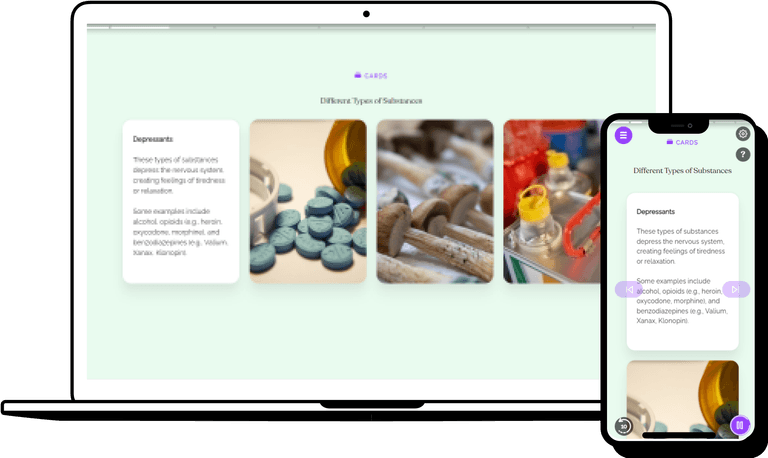Introduction to Drugs and Alcohol in the workplace Training
Learn what matters when it comes to substance use and misuse: their legal responsibilities, protections regarding substance use and employment, and options for substance use disorder treatments.

Consequences of Drug and Alcohol Abuse in the Workplace
Drug and alcohol abuse can lead to decreased productivity, increased absenteeism and tardiness, increased accidents and injuries, increased health care costs, and decreased morale. Additionally, it can lead to legal issues, such as liability for employees’ actions while under the influence, due to the employer’s failure to take appropriate action. Employers must be proactive in addressing drug and alcohol abuse in the workplace to protect their business, employees, and customers.

Drug and alcohol use in the workplace can have serious consequences. But with proper training, employees can learn how to recognize the signs of substance abuse and make sure that their work environment is safe and free from these risks.
Training can help reduce the risk of employees using drugs and alcohol, which can help improve productivity in the workplace. Research has shown that employees who are not under the influence of these substances are better able to focus, think more clearly, and be more productive. Training can also help employees understand the effects of drug and alcohol use on their performance, and how it can affect their ability to do their job.
A drug- and alcohol-free workplace creates a safe and healthy work environment for everyone. Employees who are not under the influence of these substances are less likely to act recklessly or cause physical harm to themselves or others. Training can help employees learn about the dangers of drugs and alcohol, and how to recognize the warning signs of substance abuse.
Drug and alcohol training in the workplace can help employees stay away from using these substances, reducing the chances of them having an accident or causing other problems on the job.

Understanding Your Legal Obligations to Employees and Others in the Workplace
It is important to be aware of the laws and regulations that govern drug and alcohol abuse in the workplace. This includes developing policies and procedures to ensure compliance with the law and providing guidance on how to deal with employees who are found to be in violation of these laws. It is also important to ensure that employees are aware of their rights and responsibilities when it comes to drug and alcohol abuse in the workplace.
Goals of Alcohol and Drugs in the workplace Training
By the end of this training, employees will be able to:
Here are some myths to look out for:
- -
Describe the risks associated with drugs and alcohol in the workplace
- -
Define substance misuse
- -
Identify red flags for substance misuse
- -
Explain the laws surrounding substance use in the workplace

The most thorough Drugs and alcohol in the workplace training on the market
EasyLlama’s Drugs and Alcohol in the workplace course goes far beyond typical training. It not only educates employees on the dangers and effects of drugs and alcohol in the workplace, but also provides tools and resources to help them make better decisions related to substance abuse and workplace safety. The course also helps employers create policies and procedures to help prevent drug and alcohol use in the workplace, and outlines the legal requirements that must be followed.

Helping over 8,000 organizations create a safer, more productive workplace
By providing learners with a more in-depth understanding of substance use and misuse in the workplace, this course empowers individuals and organizations to create a culture of support and empathy, ultimately leading to a safer and more productive workplace for all.





















